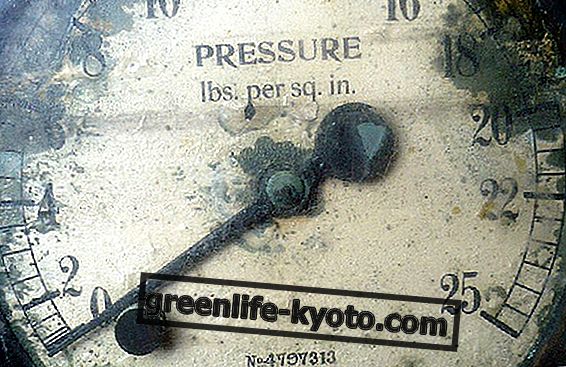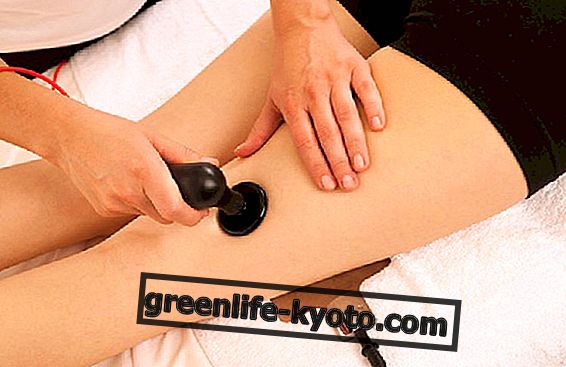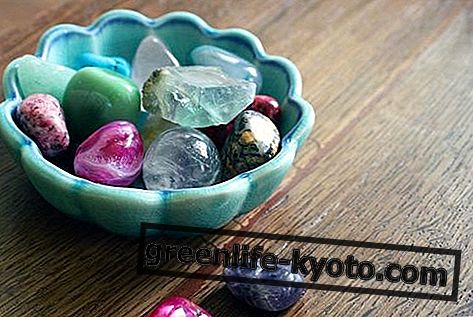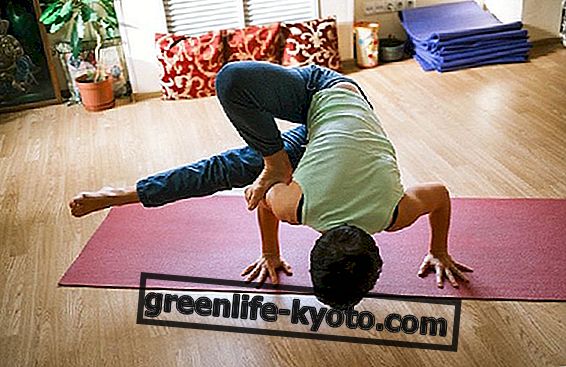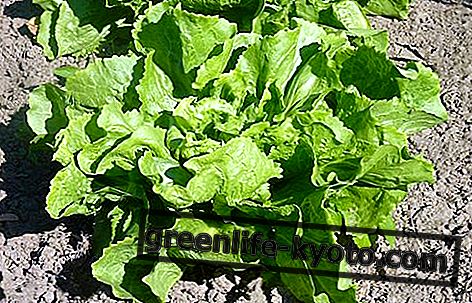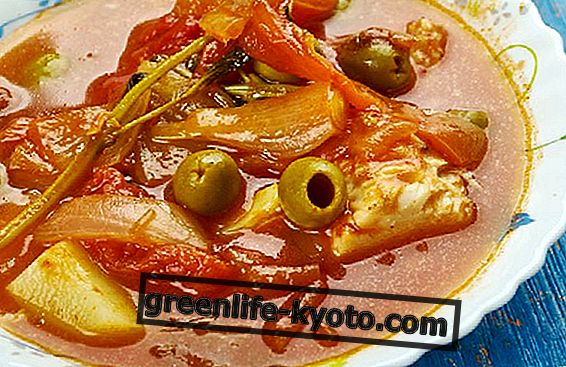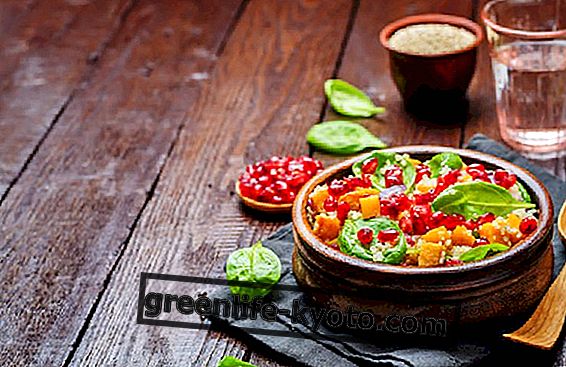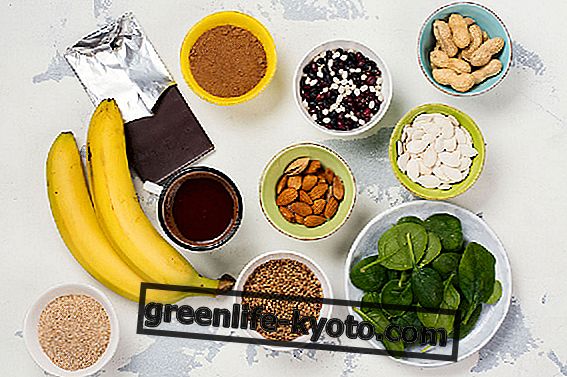
Let's discover the practical suggestions for a perfect cooking of food ...
How to prepare food for cooking?
- Peeling and peeling vegetables causes loss of vitamins and minerals . In particular, during cooking, the peel performs a protective function against the loss of soluble vitamins, especially of vitamin C.
- Quickly rinse fruit and vegetables : the lower the contact with water, the lower the losses of vitamins and minerals. For the same reason, wash and cut fruits and vegetables when serving or cooking them. If you have to prepare them in advance, wrap them in a damp cloth and keep them in the fridge.
- It is preferable to keep the whole food, when possible, so that the surface exposed to contact with the external environment is as limited as possible.
- Fruits and vegetables that darken due to oxidation, such as bananas, artichokes, thistles, mushrooms, etc., must be sprinkled with lemon juice and stored in a closed container placed in the refrigerator.
- Chopped vegetables can be stored in slightly opened plastic bags to prevent fermentation.
- The use of an already hot pan or boiling water limits the loss of nutritional elements, since it causes the formation of a protective film, consisting of coagulated proteins, on the surface of the food.
Cooking vegetables
By cooking in water, which involves immersing the vegetables in boiling water, most of the vitamin and mineral content is lost; if you want to proceed in this way, it is advisable to use the cooking water, rich in dissolved minerals but not vitamins that do not resist high temperatures, for soups or soups.
Steam cooking, on the other hand, limits the loss of vitamins and minerals, as it prevents the food from coming into contact with water. Proceed by placing the food on a grid or a perforated support, and exposing it for a time to the passage of the steam that comes from the boiling water contained in a container placed below the food itself.
The best method for cooking vegetables, however, is brazing, ie cooking in very little water, which limits the loss of vitamins and the dispersion in mineral water.
If food is cooked over low heat for a short time, the destruction of vitamins is minimal. The water must already be salted, to expel the oxygen more quickly from the food and thus avoiding the deterioration of the vitamins.
Cooking legumes
Dried pulses should be soaked in cold water for 12-24 hours, often changing the soaking water : this operation increases their digestibility. They should be placed in a pot with plenty of cold, unsalted water, adding, to flavor, vegetables (carrots, onion and celery) and aromatic herbs, for example rosemary, bay leaves, garlic ...
Cooking times vary depending on the type of legume: for beans 2.5 hours; for lentils 2 hours; for chickpeas 3 hours. Fresh legumes (beans, peas, broad beans) do not require soaking and require a shorter cooking time, from 20 minutes for peas, to an hour for beans.
How to cook whole grains?
Before cooking, integral i cereals must be washed under running water and some, such as kamut, wheat and spelled, must be soaked for at least 12 hours. After these operations, they can be boiled in salted water; to obtain a more pleasant taste, it is advisable to toast them for a few minutes in a little extra virgin olive oil over high heat, then adding the boiling water necessary to cook them.
Cooking in a pressure cooker is recommended, except for millet, amaranth, quinoa and buckwheat, which, being tender, would be reduced to a pulp.
Grilling
The "grilled" cooking method is one of the most popular. Whether it's grilled burgers, grilled chicken, grilled peppers, salmon or other grilled fish, the cooking on the grill is quick and tasty, as well as healthy.
Particularly suitable for various types of meat and for fish, grilling can also enhance the flavor of vegetables. It is preferable to marinate fish and meat in oil and aromas such as sage and rosemary, before grilling them. Vegetables, on the other hand, are preferable to cook without marinating.
The secret of a perfect "grill" is in the heat : the cooking temperature must be inversely proportional to the size of the food. Small pieces will therefore have to be cooked with strong heat and quickly, while larger pieces will instead have to be cooked at low heat and more slowly.
Glazed cooking (also called "in casserole")
It is mainly made on white meats, such as lamb, pork and veal (slices of thigh, walnut, boned loin, shoulder), pullet, capon and rabbit.
It is a cooking similar to the roasted one, but made in a closed container (low casserole or cocotte). Prepare a background of celery, carrot and onion cut into cubes and cover with it the base of a low casserole or a suitable sized casserole. Prepare the meat for cooking, season it, transfer it to the casserole and sprinkle it with melted butter. Cover and bake at 180-200 ° C. Wet the meat frequently with the cooking juices and pay attention that the aromatic garnish does not burn; when cooked, remove the lid and lightly brown the food in the oven.
Cover the meat with aluminum foil and store it in a warm place inside a baking pan containing a grill, so that the heat and internal liquids conform. Wet the cooking juices with wine or cognac and let it partially evaporate, then add the brown stock (60g portion) and let the sauce reduce for at least 10 minutes, so that the butter can return the aromas absorbed during cooking.
To obtain the accompanying sauce, strain the preparation with the Chinese strainer and degrease it. If you wish to present the whole piece of meat, proceed with the glazing: pour a portion of the sauce into the casserole together with the meat and bake; wet frequently with the cooking liquid until a perfect glaze is obtained.
To avoid the risk of burning the aromatic garnish, always cut it into large cubes. with good broth, but the taste and shine will not be the same.
Choose the cooking pan carefully : it must be just enough to contain the food, otherwise the aromatic bottom is likely to burn. In order for the meat to glaze to perfection, the sauce must be very gelatinous, therefore it is advisable to add a calf leg in the preparation of the brown bottom. You can eventually replace the brown bottom
Baked in foil
It is a cooking made in a closed environment to avoid the dispersion of flavors and aromas and of the food moisture. Since the fish is undoubtedly the most often cooked food with this technique, the fish will be used in the following procedure. Among the most suitable fish we find the sea bass, the red snapper, the gurnard, the gilthead, the tuna and the mullet. For an effective presentation, you can replace the aluminum foil with sulfurized paper brushed with beaten egg: remember to serve immediately on a very hot plate, as it tends to deflate rapidly.
Take a large aluminum foil, place the clean fish on top, season with salt, pepper and extra virgin olive oil and add the appropriate flavorings: wild fennel for sea bass and blue fish, rosemary (in small quantities) for red mullet, capers for tuna, dill for salmon, chervil for turbot and white fish, garlic and parsley for most other fish.
Close the sheet and fold the edges several times to hermetically seal the bag, forming a sort of calzone ; after placing the cartons on a baking tray at a certain distance from each other, bake at a temperature of 180-200 ° C. After a certain period of time, the different air pressure inside and outside the cartoccio will cause it to swell: when the cartoccio reaches the maximum possible development, the fish will be cooked.
How to cook pasta?
It seems easy for an Italian to prepare a pasta dish . But doing it good is another story.
Passive cooking But what is passive cooking? The pasta should cook only two minutes - starting from the boil, or after the water has started boiling again after the pasta has been poured - on the fire. After that, you have to turn off the stove and cover the pot with the lid: in this way our spaghetti will continue to passively cook, until the end of the minutes set for that type of pasta.
To give an example, if some linguine are to cook 11 minutes, it will mean that they will cook 2 minutes on a fire and the remaining 9 minutes with the heat off and covered. The revolution is not trivial: if you boil the pasta all the time on the fire, it will disperse starch and gluten, that is, it will release in the water - and therefore not in the dish, in our palate - precious flavors and nutrients.
Strictly al dente Another suggestion concerns the cooking times: the pasta should be cooked al dente, not only for the taste, but also because this is the only way it is more digestible. The tooth releases all its nutritional values and gives a feeling of lasting satiety, for about 4-5 hours. Too cooked instead becomes a brick that gives a sense of heaviness, but of short duration.
Never mistreat the dough The dough should be caressed, cuddled, turned gently in the pan. Because cooking must be finished in the pan together with the seasoning.
Never throw away the water from the pasta: if the sauce is too dry, it must be lengthened with the water from the pasta, which must never be thrown away when it is drained. Because it is rich in flavors useful to embellish the sauce.
The right saucepan for the sauce: also the choice of the pot suitable for the sauce is important for the success of the dish. Never use a tall, narrow pan: for the tomato sauce a large pan is fine. The tomato must lie down, it must breathe, open. And to make the sauce sweet, no sugar ( what a false myth !), But a high temperature of the stove ".


